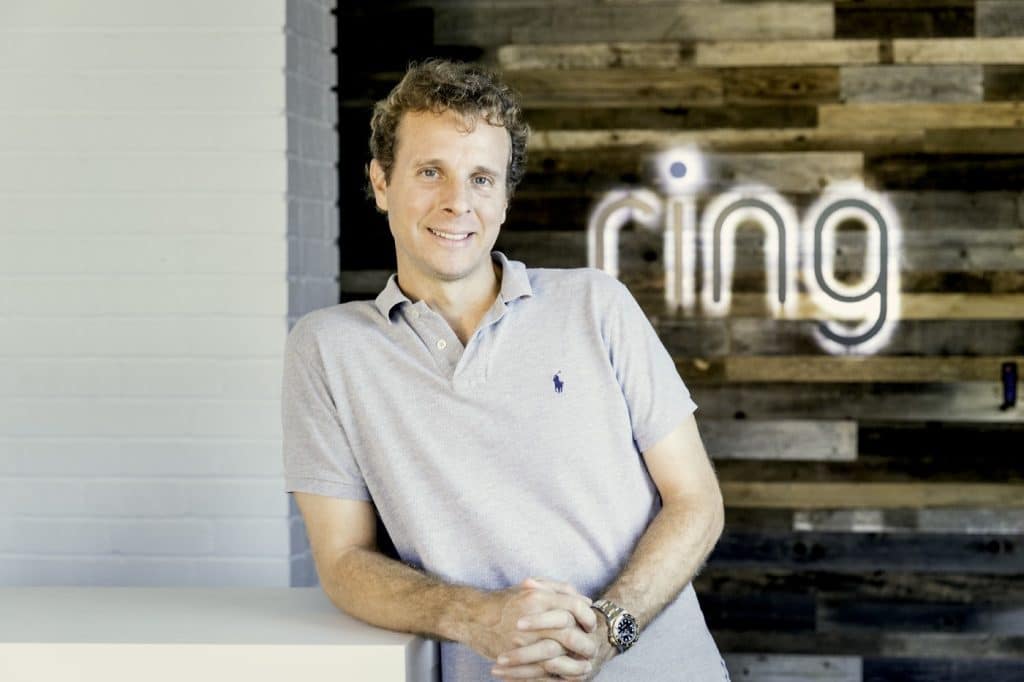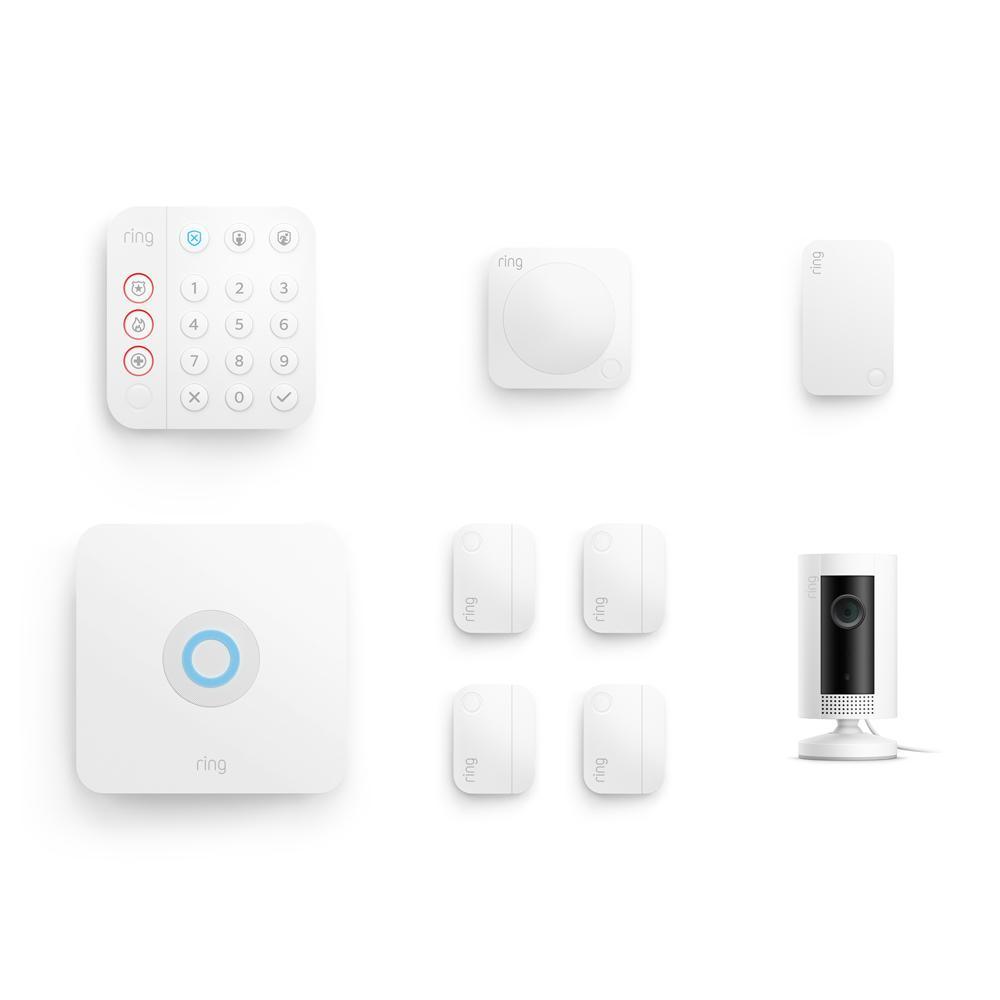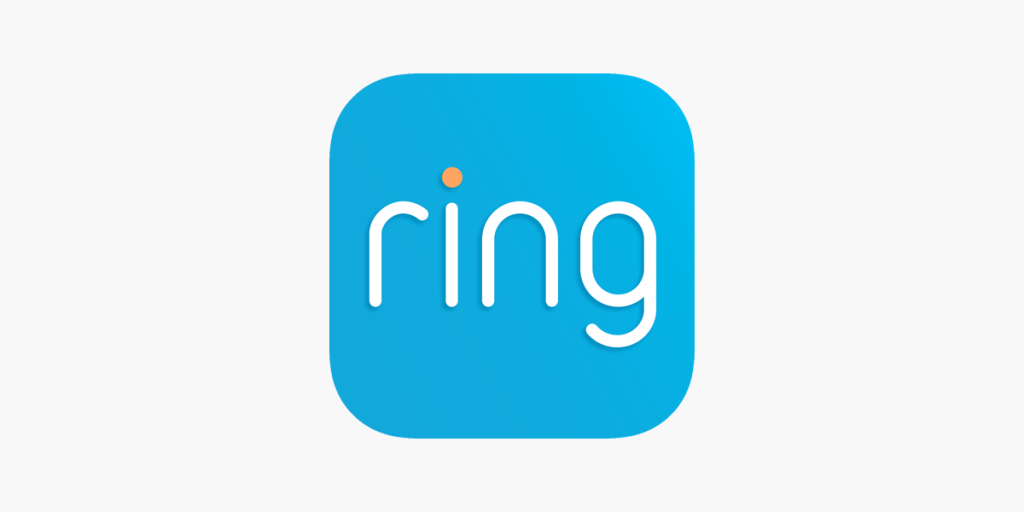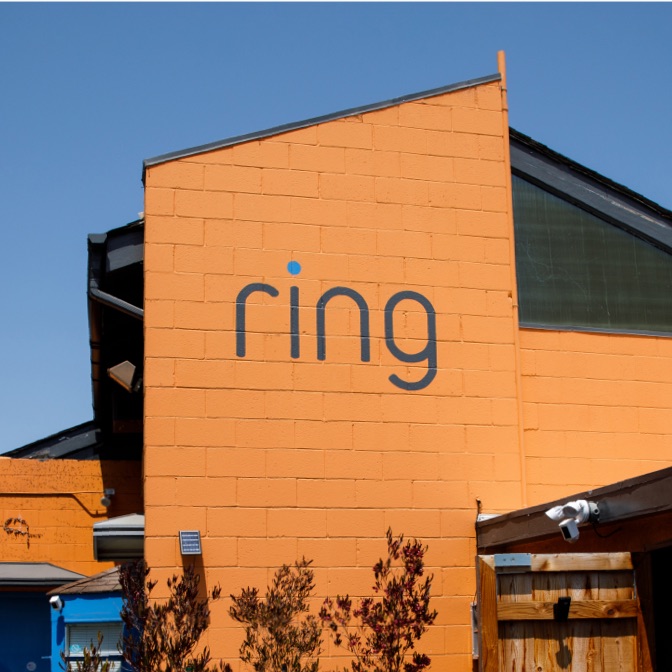You don’t have to be a Shark Tank fan to be familiar with the Ring. Since the company was founded back in 2012, the Ring security doorbell has grown in popularity. Whether you own a Ring product yourself, or someone you know does, chances are that you are beginning this article with some knowledge about what this brand offers.
What you might not be as familiar with though, is how the brand came to. And if that sounds like you, then you’ve come to the right place. The Ring doorbell has taken the world by storm and any company that does that, can teach the rest of us some lessons. A large part of Ring’s popularity is due to its iconic logo design and because of that design, Ring’s logo and the brand now go hand and hand.
Below in this article, we’ll take a closer look at the brand’s evolution and why Ring’s logo has helped them build brand loyalty with their customers. By the end, you’ll be ready to take the lessons learned from Ring and implement them with your own business’s logo design.
Meet Ring
Ring is a company founded by Jamie Siminoff. Ring is wi-fi enabled, video doorbell that notifies you not only through the typical “doorbell” sound, but also on your smartphone. This integration to the user’s smartphone offers more security to anyone that installs a Ring doorbell.
While Jamie founded the company in California, Jamie was born on the east coast in Chester, New Jersey in October of 1976. He attended Babson College and graduated with a degree in entrepreneurship. Now that we know Jamie founded Ring, this degree makes sense. Also, growing up, he regularly created things and experimented with creating different products in his childhood garage.
Before launching Ring, Jamie’s first business was called Your First International. This business was focused on helping entrepreneurs make their dreams come true. He went on to start a second business in 2005, called Phone Tag. Phone Tag was the first voicemail-to-text service created and in 2009, Ditech Networks purchased this company for $17 million. Jamie used the money from this purchase to fund the starting of a few other businesses before Ring was officially founded.
Jamie founded Ring after he grew tired of missing package deliveries because his wife couldn’t hear their doorbell. When Jamie first founded Ring, he decided to name the company Doorbot. It wasn’t until after he appeared on Shark Tank that Jamie renamed Doorbot, Ring. He decided to change his company’s name because Doorbot sounded more tech-focused and he wanted a timeless name that directly correlated to the business’s mission. The name “Ring” was suggested by Hamet Watt of Upfront Ventures. Hamet felt that this new name would resonate perfectly with the brand. Jamie ultimately chose this new name because it not only signifies a doorbell, but also because it conveys the company’s mission of security. Following his decision, Jamie immediately purchased the domain name for $1 million.
Ring’s Evolution
2011-2012: Ring is founded
Ring was founded in 2011 by Jamie Siminoff and was created based on an issue Jamie was tired of dealing with. His wife couldn’t hear their doorbell regularly, so Jamie kept missing deliveries. After he couldn’t find a doorbell that connected to his smartphone to alleviate this problem, he decided to create his own product.
When it came time to develop the product, Jamie teamed up with some developers and engineers and built his invention in his garage. The original name of the Ring doorbell was Doorbot.
2013: Jamie appears on Shark Tank
To build momentum with his product’s launch, Jamie appeared on Shark Tank in 2013. Jamie went on the show with the hopes of gaining a $700,000 investment, but none of the “sharks” bit. On the show, he pitched it as what it still is today: an American company specializing in home security and protection products. After his Shark Tank episode aired, Jamie caught the attention of investors, and shortly after, he renamed his company Ring.
2014: The first Ring doorbell is sold
After Jamie’s appearance on Shark Tank, demand for the product took off. Two years after the company was founded, in 2014, the first Ring doorbell was sold.
2015: Ring launches the Stick-Up Cam
One year after Ring’s demand skyrocketed, the company released its next product, the Stick-Up Cam, which was a wireless IP camera. This camera was constantly being improved and three years later the original camera was outfitted to include motion detection, two-way audio, a cylindrical design, and the option to either operate it with battery, wires, or solar power.
2016: Shaquille O’Neal invests in Ring
While Ring already had several investors on board (including Richard Branson and Goldman Sachs), Shaquille O’Neal bought a stake in the company in 2016. With his investment, Shaquille became the face of the company and Ring raised more than $200 million from investors.
2017: Floodlight Cam is launched
Two years after the Stick-Up Cam was launched, Ring launched a Floodlight Cam. This security camera was integrated with motion-activated LED floodlights.
2018: Amazon purchases Ring
To generate money, Jamie decided to sell his company to Amazon in 2018. Jeff Bezos first grew interested in the company after he saw Jamie on Shark Tank. The sale was around $1.2 billion and with Amazon’s ownership, the company released Ring Alarm, an alarm security system. This system included a keypad, siren, and motion sensors.
Roadblocks Along the Way
With Ring, the biggest challenge the company continues to navigate is turning its existing customers into repeat customers. For instance, once someone purchases a Ring doorbell, how do you keep that customer around? Ring decided to increase its product offerings to appeal to these customers. Once a customer purchases a Ring doorbell, they can then also purchase a security system and lighting products for the rest of their home, or outdoors.
The Meaning of Ring’s Logo and Ring’s Logo History
At first glance, a business’s logo may seem like a simple emblem that comes together easily. If you know anything about logos, you know that isn’t the case though. Graphic designers and creative professionals have countless graphic design tools they can utilize and every choice they make is intentional. That means that when a logo is finalized, the choice for that design to be the face of the company was a thoroughly thought-out, intentional decision.
With the Ring’s logo, the logo they intentionally chose from day one is the logo that remains today. More than 10 years since the company was first founded, and the logo was first launched, there has never been any rebranding of the design. Ring has become a trusted brand, in large part because of their logo, and the logo has helped build a community of loyal consumers.
While the logo has not changed over the years, let’s still take a deeper dive into the design elements.
2012-Present: The first (and only) version of the Ring logo
When you look at Ring’s logo, you see minimalist and classic design details that together create an aesthetically pleasing design. The wordmark is the company name and it’s written in solely lowercase letters. The font choice has an ultra-thin weight with subtle curves and the font colors were chosen to mimic what you would find actually on a Ring doorbell. Sometimes the logo is highlighted on a bright background, like blue, but usually, you’ll find it on a neutral, white background, which lets the logo shine.
Ring’s logo font:
The Ring logo’s font was custom designed by Matt Desmond. Matt created this variable, sans-serif bold font that can be used in a variety of weights and styles. Overall, this font is clean and visually appealing. This font is versatile for whatever marketing medium it is being printed on, and this font has become the face of the brand.
Ring’s logo color:
When you look at the Ring logo, you’ll find three colors. Each was chosen for the different emotions they convey.
Black is the color choice of the lettering. Black is often chosen to convey mystery, strength, authority, and elegance. Another color you find on the logo is blue. Like the black coloring, blue was chosen as an accent to the lettering, specifically with the “i” letter. The dot on the top of the letter “i” is blue and this color choice conveys loyalty, confidence, stability, and sincerity. A final color you’ll find on the logo is white. This is a neutral color choice, and the color was chosen to be the background of the logo. This color choice contrasts with the black and blue coloring and often conveys feelings of safety, protection, perfection, purity, goodness, and cleanliness. Each of these colors conveys feelings that are pivotal components of the brand.
Ring’s logo symbols:
While it can easily be confused with the dot that you’ll find on the top of the letter “i,” the dot is actually a round shape – a ring. This ring was chosen to represent a doorbell, which depicts what the brand is. A ring can also convey community, unity, eternity, and totality. These are all positive feelings that Ring wants its customers to feel, which makes this symbol choice a logical choice.
Ring Today
As highlighted earlier in this article, the Ring doorbell was founded by Jamie Siminoff in 2012 and is a company that specializes in home security devices. When Ring was first founded, the company was originally called Doorbot and the company solely produced video doorbells but now the brand has expanded its reach to other products. Today, their product list includes smart lighting, higher-tech security cameras, entire security systems, doorbell accessories, and much more.
Much of the Ring’s early success was due to Shark Tank. When Jamie appeared on the show, he was given free advertisement, and having access to viewers across the globe helped bring his product to the attention of millions of viewers. After his appearance, the doorbell grew in popularity (and demand) and attracted investors from all over.
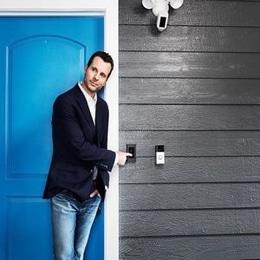
Ring’s headquarters can be found in Santa Monica, California, close by to where the brand was originally founded. Today, Ring has over 1,300 employees. Even though Amazon purchased Ring in 2018 for $1.2 billion, Amazon hasn’t touched the logo. That’s likely because Amazon knows that with Ring comes a loyal customer base that associates the brand with the logo. The newest product Ring has launched under Amazon’s ownership is their Always Home Cam which was released in September 2020. This product is an indoor aerial camera that flies along a predetermined path you choose.
In his personal life, Jamie is married to Erin Lindsey. The two married in 2006 and have a son, Oliver together. Today, Jamie is worth $350 million.
Lessons Learned from Ring
Just because a business has never updated its logo doesn’t mean there aren’t lessons to be learned. Since Ring has never updated its logo, what they created works. That means as you create a logo for your business, you should mimic some of the elements of this logo so that your logo can also stick around.
The first element that works for Ring is that its logo is simple. It only has three colors (one of which is a background color) and contains a minimalist font. This font is also highly legible and can be read from afar easily.
By foregoing trendy elements, Ring’s logo is timeless. Along those same lines, Ring’s logo stands out and is eye-catching even with its simple design. The logo is also visually appealing which means that customers will enjoy looking at it and will seek it out. With these attractive elements, the logo is memorable. The logo is also memorable because the design is versatile and can be scaled up or down regardless of the medium it is displayed on. Even though Ring makes it look easy, you can also have a logo design that lasts.



